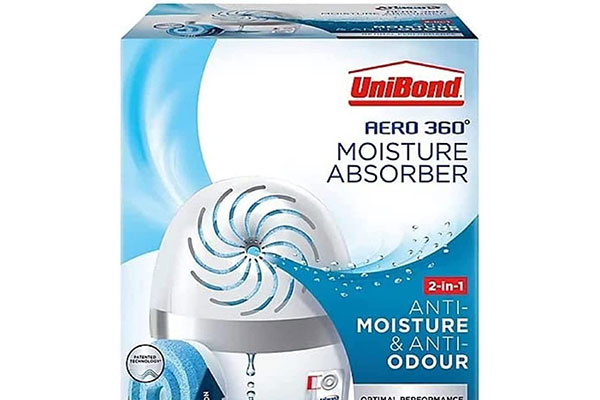Humidity is a factor in many areas. The evidence of moisture in the air has been known to rot out decking, cause mould throughout homes, and can even make lung health problems even worse. Humidity is not just an exterior issue, but can be a problem within your home as well. Areas that are not managed by air conditioning systems can become a haven for high humidity leading problems for the home and those who reside within. The loft of your home is one of the more susceptible areas of your house to experience high humidity levels.
Best Dehumidifier for the Loft

DD3 CLASSIC MK2
- Light weight 7.5 kg
- Desiccant Dehumidifier – works well in low temperatures
- Powerful extraction of up to 10.5 Litres of moisture
- Large Tank 4.2 Litre
- Lightweight: 6kg
How Does Moisture Occur in the Loft?
Lofts hold humidity primarily to their location. Heat rises naturally within any home and seeps into the loft area. When the air outside is cooler, condensation begins to form on the walls of your loft. Generally, a little condensation is not a problem, but when you notice the loft space holding a lot of humidity due to missing or obstructed roof systems or a crack somewhere else in the home, a dehumidifier may be the best option.
What Happens to the Roof if Dampness is Not Properly Dealt With?
Homes are designed to contend with a lot, but excess moisture is the quickest way to deteriorate the integrity of your home. Your roof is among the most important aspects of any home. It protects everything beneath it. Roof materials such as composite shingles and metal are designed to keep moisture from infiltrating the interior portion of your roof. However, it is not designed to contend with moisture coming from beneath those materials.
Mismanaging moisture within your loft space can cause the structural integrity of your roof system to deteriorate, threatening the very functionality of the roof. Mold and mildew are very real possibilities in a loft area and maintaining proper humidity levels is essential.
Can I Put a Dehumidifier in a Loft?
Yes, you can. A dehumidifier in a loft is possible. However, the type of loft you have will dictate the style of dehumidifier needed. In a standard loft space, with no development, the lack of electrical outlets and space can make it difficult to place an electric dehumidifier in the area. Thankfully, The ANSIO Interior Dehumidifier is a great option. These small dehumidifiers can be placed anywhere and ward off excess moisture for up to 6 weeks in a 20 square meter location. You can read full review of this great product here.
For loft spaces that are developed and have access to electrical outlets, a plug in dehumidifier is the best solution. These units are generally compact and are safe to use in open areas, such as a loft. Modern designs for dehumidifiers include noise reduction technology, so you need not worry about a loud system ruining your nights sleep. With these units, access to the loft is essential for maintenance as they do have to be emptied when the unit is full. Depending on the humidity level of your loft and how often you set your unit to run, it may require emptying daily or weekly.
Some of the other best dehumidifiers for lofts include:

Avalla X-200 Smart Dehumidifier
With the Avalla X-200 Smart Dehumidifier, your loft space will have the 2 in 1 combined benefits of a dehumidifier and air purifier. This unit offers a 12L capacity and run quiet technology. Additionally, the Avalla X-200 Smart Dehumidifier has been enabled with smart technology that allows it to turn off after 24 hours while providing less energy consumption than comparable brands. The convenient LCD display allows you to keep a close eye on the humidity level of the space and overall health of the unit. The compact design is ideal for any developed loft space.

MeacoDry Arete One
With a full 14L capacity, the MeacoDry Arete One is larger than your typical loft dehumidifier. The H13 HEPA filter cleans the air as the whisper quiet technology attracts moisture from the air. The MeacoDry Arete One is among the most energy efficient models and its compact design makes the unit the ideal solution for most loft spaces. The MeacoDry Arete One moves on 4 hidden casters and even offers laundry and night modes for your convenience.

Pro Breeze 12L/Day Dehumidifier
The Pro Breeze Dehumidifier offers both a dehumidifier and laundry drying mode. The compact design is excellent for most loft spaces and this unit is designed for up to 12L of water extraction. The convenient drain hose can be run out of the loft space making it easier to provide continuous use without having to empty the unit regularly. The Pro Breeze Dehumidifier is designed for quiet and the Quiet Mark enabled system is among the quietest units on the market.

Meaco 12L Low Energy Dehumidifier
The UK climate can be difficult to contend with, but the Meaco Low Energy Dehumidifier makes it a breeze. This unit features low energy technology and air testing technology to help it know when to switch on and when to switch off. The unit tests the air every 30 minutes saving you a lot of money on energy bills. The HEPA filtration system helps to purify the air while it dehumidifies for a healthier loft space. The Meaco Low Energy Dehumidifier maintains a full 12L capacity and quiet run technology to keep your loft space dry in any season.
Damp Problems That Arise from Loft Conversion
A loft conversion is the best way to expand your living space without actually adding on to the exterior of your home. Loft conversions are often more economical than adding on space and are among the best way to get the little extra space required for expanding the family or adding office space. The key to having a successful loft conversion is hiring the right contractor for the job.
A loft space requires special consideration for moisture. An expert contractor understands the need to install dormer windows correctly, damp proof the area, install essential roof fents, and install the right bathroom extractor fan. Neglecting these essential areas will cause ongoing dampness issues that no homeowner wants to contend with.
How to Dehumidify a Loft
Loft spaces are known for being areas where dampness is a problem. However, some loft areas have more humidity needs than others. It is vital that you assess the type of loft space you have to determine the type of dehumidifier right for the space. Generally, installing a dehumidifier is among the best ways to rid the space of excess humidity. Units that offer continuous use are often the best solution for lofts that hold a lot of moisture. However, standard units can be used as well if the loft is used on a daily basis. For undeveloped loft areas, dehumidifier cans provide moisture locking technology, but will require the homeowner to change out the units regularly, depending on how much moisture inhabits the space.
How to Find the Best Dehumidifier for a Loft
The first thing a homeowner needs to understand is the overall space of their loft. Knowing the size of your loft will ensure you get the right type and size unit for the space. Calculating the size of your loft is simply a matter of measuring the length and width of the space. Once these measurements are taken, you can multiply and determine how many meters square your loft is.
The next thing a homeowner must consider is the tank size of their dehumidifier. The reservoir on a dehumidifier has a capacity rating. Most are between 12L and 14L. An additional option is to forego the traditional reservoir tank in favor of a drainage hose. This option is great for units that are required to run for extended periods of time. However, installation can be a challenge. The drainage hose must be placed in a location that is safe to drain from the loft.

DD3 CLASSIC MK2
- Light weight 7.5 kg
- Desiccant Dehumidifier – works well in low temperatures
- Powerful extraction of up to 10.5 Litres of moisture
- Large Tank 4.2 Litre
- Lightweight: 6kg
On the helm of understanding the water reservoir of your unit, the homeowner must know the overall capacity of their dehumidifier. The capacity rating is different than the reservoir tank holding capacity. This rating is determined by how many liters the unit can extract in a 24 hour period. For example, if the capacity rating is 60L, but the tank only holds 12L, the unit will have to be emptied 5 times in a 24 hour period to work to its full potential.
In a loft, the homeowner may or may not use the space daily. The need for an automatic shut off switch may be essential. Sensors within some units actually monitor the environment around them to shut the unit off when necessary. If humidity levels fall below a certain level, the unit shuts off to conserve energy. The automatic start and stop feature of many units is vital to contend with increasing energy costs.
The brand name is another thing to consider. With dehumidifiers, the brand name and reputation of the company is very important. Remember, you will be using the unit in a part of your home, so safety is essential. Only buy a dehumidifier from a company with a trusted reputation and 24 hour customer service call lines. Additionally, only purchase a unit with a full warranty to ensure you get a quality device that fits your needs.
What Types of Dehumidifiers Are Best for the Loft
There are 2 types of dehumidifiers that are ideal for a loft space. The Compressor Dehumidifiers and Desiccant Dehumidifiers.
Compressor Dehumidifiers are those that work like your refrigerator. This type of dehumidifier maintains a coil of refrigerant. When it is hit with warm, moist air, it condenses and drips into a water tank. The problem with compressor dehumidifiers is that extreme drops in temperature can cause the unit to freeze and fail.
Desiccant Dehumidifiers are designed to pull in warm, moist air via a rotor system. These units are designed for any temperature, so they are ideal for loft spaces in areas where temperature drops are common.
Essentially, the type of dehumidifier required for your loft space depends on whether it is developed or not. A developed loft space will have a constant temperature while a non-converted loft will require consideration for extreme temperature changes.
What Else Can You do to Stop Condensation
Sometimes the simplest solutions are the best ones. Before spending a lot of money on a new dehumidifier try few things to stop condensation in your loft. Make sure it is well ventilated and insulated. Check our article where we covered DIY methods to stop condensation in the loft.

Attic Space Ventilation (Felt Lap)
- Easy installation from inside of your loft
Last update on 2025-02-28 / Affiliate links / Images from Amazon Product Advertising API







